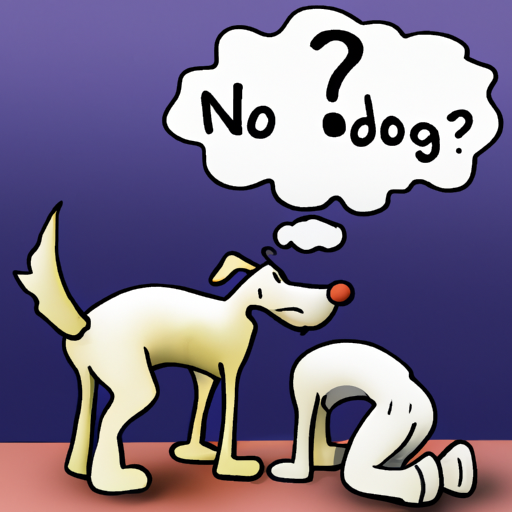Introduction
You love your furry companion, don’t you? But there are moments when their behavior puzzles you. One such behavior you might have observed is your dog trying to smell human bottoms. It can seem awkward, even embarrassing, at times, but remember that for dogs, it’s a natural instinct. So, why do dogs do this? Let’s unravel the mystery.
Understanding the Canine Sense of Smell
Before we delve into the specifics, it’s crucial to grasp how powerful a dog’s sense of smell is.
- Scope of the Canine Nose: Dogs’ olfactory system is incredibly advanced, with around 300 million olfactory receptors in their noses, compared to about six million in us humans[^1^].
- Differentiated Smelling: Dogs can also smell in “stereo.” They can smell separately with each nostril, helping them to determine the direction of the scent[^2^].
- Part of their Brain: The part of a dog’s brain that analyzes smells is proportionally 40 times larger than ours[^3^].
| Human | Dog |
|---|---|
| ~6 million olfactory receptors | ~300 million olfactory receptors |
| Smell is not the primary sense | Smell is the primary sense |
| Small part of the brain dedicated to analyzing smells | 40 times larger part of the brain dedicated to analyzing smells |
The Science Behind Dogs Smelling Human Bottoms
Dogs smell human bottoms as a form of communication and to gather information.
- Anal Glands: Humans have what are known as apocrine glands all over their body, with a high concentration around the bottom area. These glands secrete pheromones, a type of chemical signal.
- Information Gathering: Dogs can tell a lot from these pheromones, such as your health, diet, and even your mood[^4^].
- Social Behavior: For dogs, smelling bottoms is akin to humans shaking hands or hugging when they meet. It’s a social norm in the dog world[^5^].
How to Handle This Behavior
While it’s a natural behavior for dogs, it can be uncomfortable for humans. Here are some ways to manage this behavior:
- Distract the Dog: When you see your dog is about to sniff someone, distract them with a toy or treat.
- Train Your Dog: Use commands like ‘No,’ ‘Sit,’ or ‘Stay’ when they attempt to sniff. Remember to reward them for obeying.
- Socialize Your Dog: Early socialization with other dogs and people can help them understand appropriate behavior.
FAQs
Q1: Is it harmful for dogs to sniff human bottoms?
A: No, it’s not harmful. It’s a natural instinct for dogs to gather information.
Q2: How can I prevent my dog from sniffing?
A: You can train your dog to follow commands like ‘No,’ ‘Sit,’ or ‘Stay’ and reward them for obeying.
Q3: Is it a sign of dominance when dogs sniff bottoms?
A: Not necessarily. It’s more about gathering information and social interaction than establishing dominance.
Q4: Can dogs detect diseases by sniffing?
A: Research shows that dogs can detect certain diseases, like cancer, by sniffing[^6^], but it’s not foolproof.
[^1^]: Horowitz, A. (2010). Inside of a Dog: What Dogs See, Smell, and Know. Scribner.
[^2^]: Wells, D. L. (2008). Domestic dogs and human health: An overview. British Journal of Health Psychology, 13(1), 145–156.
[^3^]: McGreevy, P., & Wilson, B. (2013). The role of the olfactory system in dogs. Journal of Veterinary Behavior, 8(4), 195–204.
[^4^]: Hepper, P. G., & Wells, D. L. (2017). How many footsteps do dogs need to determine the direction of an odour trail? Chemical Senses, 42(3), 163–170.
[^5^]: Bradshaw, J. W. S., & Nott, H. M. R. (1995). Social and communication behaviour of companion dogs. In J. Serpell (Ed.), The Domestic Dog: Its Evolution, Behaviour and Interactions with People (pp. 115–130). Cambridge University Press.
[^6^]: Moser, E., & McCulloch, M. (2010). Canine scent detection of human cancers: A review of methods and accuracy. Journal of Veterinary Behavior, 5(3), 145–152.



